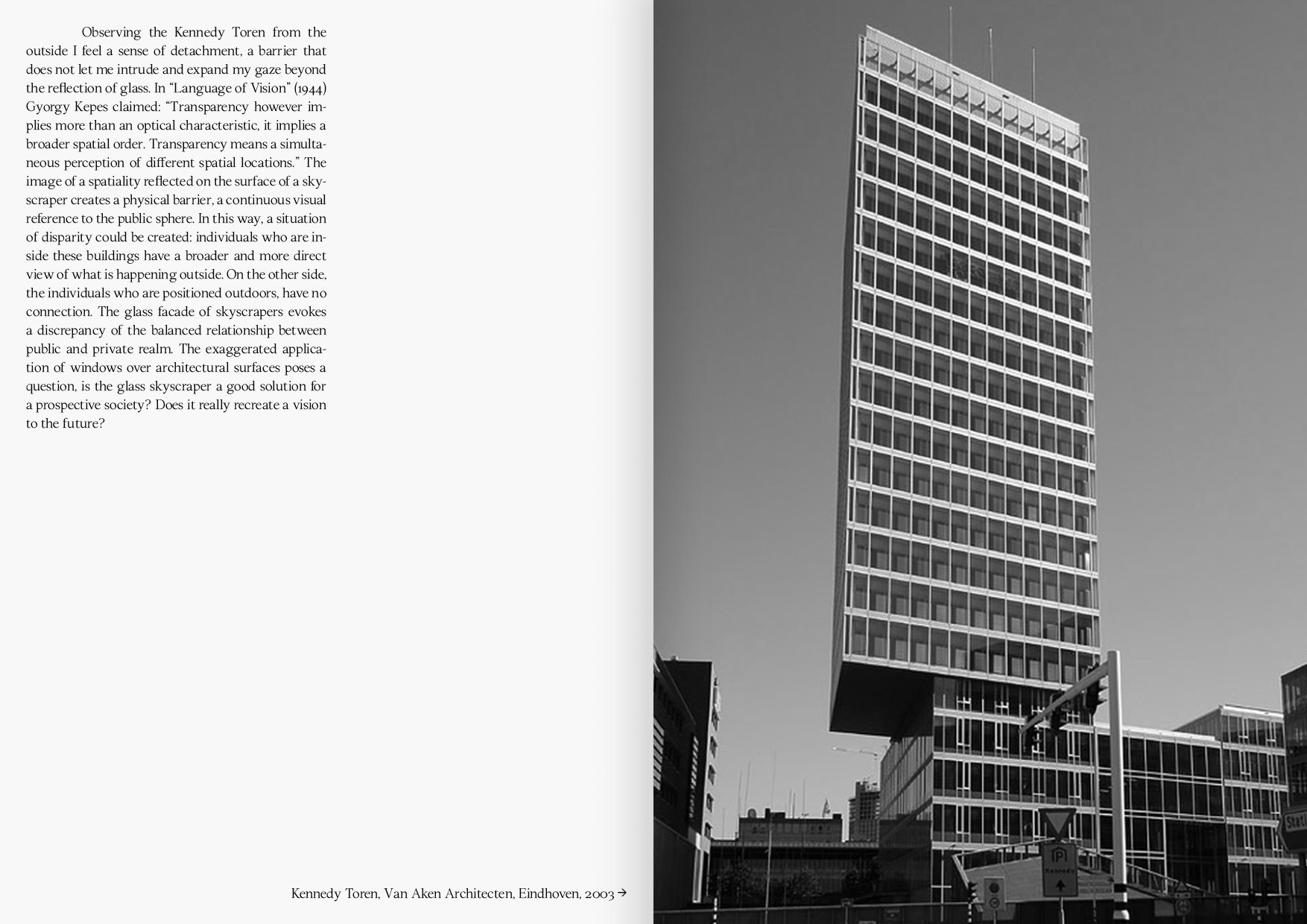Liquid Rituals
Ephemeral gardens
On the edge of liminal grounds
In a grain of sand I see a town
Anatomy of the ceramic tile – An invisible simulacra
Mr. Kuma, Why Do I Keep Crashing Into You?
When Windows
Become Walls
Masterplan: Flipping StrijpS
and
Burning Membrane
Human Habitat
Circle – Minimal Urban Structure
2022
Do windows serve as mere openings in architectural facades?
Throughout history, windows have evolved from openings to powerful elements that connect distinct spatial realms.
By examining the varying implications of windows within the Dutch context – from their domestic role tied to Calvinist beliefs to their use as curtain walls in skyscrapers – When Windows Become Walls is an essay that delves into the complex role of windows in shaping the aesthetic, functionality, and ambiance of these architectural forms.
Throughout history, windows have evolved from openings to powerful elements that connect distinct spatial realms.
By examining the varying implications of windows within the Dutch context – from their domestic role tied to Calvinist beliefs to their use as curtain walls in skyscrapers – When Windows Become Walls is an essay that delves into the complex role of windows in shaping the aesthetic, functionality, and ambiance of these architectural forms.
Eindhoven's skyscrapers, such the Kennedy Toren and the Vesteda Toren, serve as specific architectural case studies that exemplify the interplay between glass, steel, and a sense of weightlessness in modern architecture. The essay ponders whether these glass skyscrapers embody a forward-looking vision or inadvertently perpetuate barriers between the public and private domains.
In this exploration, the window emerges as a point of tension between transparency and reflection, as well as between the public and private realms. It becomes an essential architectural element with the potential to shape experiences and interactions within the urban landscape.
In this exploration, the window emerges as a point of tension between transparency and reflection, as well as between the public and private realms. It becomes an essential architectural element with the potential to shape experiences and interactions within the urban landscape.

Extract
The feeling and sensation of looking and being observed pervades me every time I decide to walk through the streets of Eindhoven. It is almost irresistible not to take a look inside the big windows that run through the streets, to stare in front of these openings and guess who lives inside and how the house’s interiors and decorations are. A sense of embarrassment arises every time my gaze crosses the one of the person on the opposite side of those windows. It took me some time to understand why in the Dutch context windows appear to be so wide. This architectural characteristic has past origins that date back to Calvinism.
Based on the Calvinist belief, a good citizen does not have anything to hide, every domestic activity can be easily inspected from the street. The window is present both in the front and back of the house, creating total transparency in terms of privacy and architectural materials. The line between public and private becomes subtle, turning the window in an invisible barrier in between two dimensions. Following this consideration, can windows be defined as a mere opening in the wall? Or is it more than this?
[...]
Based on the Calvinist belief, a good citizen does not have anything to hide, every domestic activity can be easily inspected from the street. The window is present both in the front and back of the house, creating total transparency in terms of privacy and architectural materials. The line between public and private becomes subtle, turning the window in an invisible barrier in between two dimensions. Following this consideration, can windows be defined as a mere opening in the wall? Or is it more than this?
[...]
Observing the Kennedy Toren from the outside I feel a sense of detachment, a barrier that does not let me intrude and expand my gaze beyond the reflection of glass. In Language of Vision (1944) Gyorgy Kepes claimed: “Transparency however implies more than an optical characteristic, it implies a broader spatial order. Transparency means a simultaneous perception of different spatial locations.” The image of a spatiality reflected on the surface of a skyscraper creates a physical barrier, a continuous visual reference to the public sphere. In this way, a situation of disparity could be created: individuals who are inside these buildings have a broader and more direct view of what is happening outside. On the other side, the individuals who are positioned outdoors, have no connection. The glass facade of skyscrapers evokes a discrepancy of the balanced relationship between public and private realm. The exaggerated application of windows over architectural surfaces poses a question, is the glass skyscraper a good solution for a prospective society? Does it truly recreate a vision to the future?
This essay was written during the elective class of Architecture Criticism at TU Eindhoven, with the supervision of Sergio M. Figueiredo.
If you have any questions or you are interested in reading the full text, please contact me.
If you have any questions or you are interested in reading the full text, please contact me.




